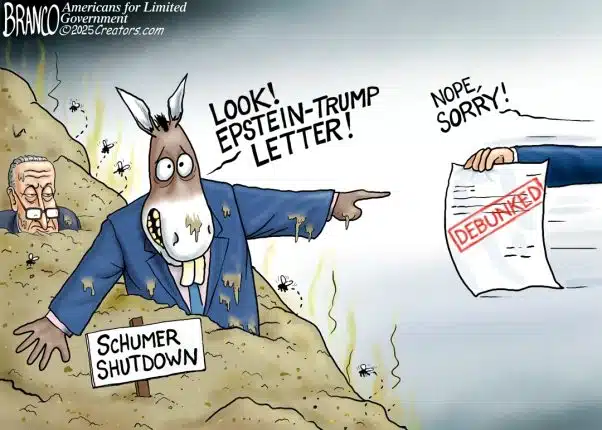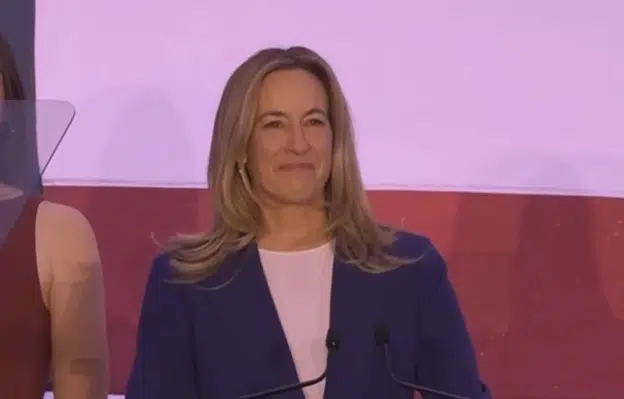NRD Editor’s Note: After submission of this Op-Ed to the Washington Examiner, further details of the Cut, Cap and Balance legislation that will come to the floor were made available. The immediate cuts are approximately $111 billion for fiscal year 2012, and not hundreds of billions as stated int he below Op-Ed.
By Bill Wilson – Standard & Poor’s issued a dire warning this week stating a 50 percent likelihood that the nation’s gold-plated Triple-A credit rating will be downgraded in the next 90 days. Not because of any failure to increase the debt ceiling, but because it appears there will be no longer-term plan that substantially reduces the deficit.
S&P said that unless an agreement is reached that results in a fiscal consolidation plan of at least $4 trillion, that the nation’s debt-to-Gross Domestic Product (GDP) will continue to increase over the next decade.
And, critically, according to the report, “We view an inability to timely agree and credibly implement medium-term fiscal consolidation policy as inconsistent with a ‘AAA’ sovereign rating, given the expected government debt trajectory noted above.”
S&P measures debt owned by the public at nearly 75 percent of GDP, rising to 84 percent by 2013. But, if one counts debt owed to the Social Security and Medicare trust funds, the picture looks even worse.
Under that metric, total debt-to-GDP is already at 95 percent, and will likely top 100 percent within a year.
This makes an upcoming vote on Wednesday in the U.S. House of Representatives critical to restoring order to the nation’s fiscal house. Then, members will be voting on the “Cut, Cap, and Balance Act.”
The legislation increases the $14.294 trillion debt ceiling, conditioned on hundreds of billions of immediate spending cuts, capping spending at 18 percent of GDP, and a Balanced Budget Amendment being sent to the states by both houses of Congress.
Because it includes a constitutional amendment, it may be the only proposal that would meet S&P’s criteria of an agreement that “would be enacted and maintained throughout the decade,” resulting in S&P reaffirming the nation’s Triple-A credit rating.
Republican Study Committee Chairman Rep. Jim Jordan, R-OH, one of the proposal’s architects, is to be praised for standing strong on real cuts. Achieving this vote was a hard-fought victory within his own conference.
House Majority Leader Eric Cantor, too, deserves credit for standing up to President Obama, and House Speaker John Boehner is to be praised for being a true representative of his conference in allowing the vote to take place. Boehner has since called the proposal a “solid plan.”
Supporters of the proposal are not at all enthusiastic about raising the debt ceiling. Instead, they have said they will only vote in favor if it means that it will not need to be increased again in the future. That’s a tall order. Ultimately, that will not be possible unless the budget is balanced and the debt begins to be paid down.
It means that in order to secure House Republican votes, there needs to be a real solution on the table that will rein in the federal Leviathan before any downgrade, default, or economic collapse ensues.
The S&P report vindicates observers who have been saying that the debt crisis is not a long-term problem, it is a problem now. Soon the national debt will become so large that it cannot possibly be repaid.
Already the nation’s total debt service ratio, a measure of average principal and interest owed every year over thirty years, stands at 41 percent. That includes $483 billion of principal and $430 billion of interest compared to $2.174 trillion of revenue.
If the current budget baseline is allowed to grow without any changes to current law, that ratio will likely rise to over 60 percent — if not worse — by 2021 when the debt reaches $26 trillion. That assumes tax revenues rise to about $3.5 trillion, which very much depends on some form of an economic recovery.
By then, interest rates are projected by the government to have returned to their historical norm of 5 percent, resulting in an annual interest payment obligation of over $1.3 trillion. Principal by then would be $866 billion a year.
At that point, repayment would probably be deemed impossible, leaving a catastrophic default as the only remaining option for taxpayers to get out from under the crushing burden.
That makes “Cut, Cap, and Balance” the only proposal on the table that can actually do anything about it. It is the only plan that cuts spending immediately, keeps it down, and balances the budget, and without the crushing tax increases Obama seeks — all the while avoiding a default now and in the future.
It therefore merits serious consideration by members of both houses. The nation can ill afford to kick this can one more time.
Bill Wilson is the president of Americans for Limited Government. You can follow Bill on Twitter at @BillWilsonALG. This post originally appeared at the Washington Examiner.






